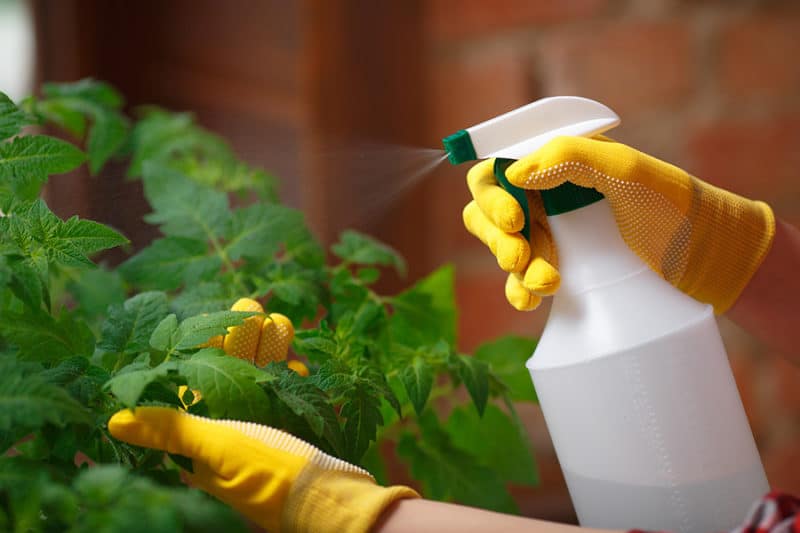Safety Precautions and Considerations

While homemade fungicides can be effective, it’s crucial to prioritize safety when handling and using them. These mixtures often contain ingredients that can be harmful to humans, pets, and the environment if not used properly.
Potential Risks Associated with Homemade Fungicides
Homemade fungicides can pose various risks, including:
- Skin irritation and allergic reactions: Some ingredients, such as baking soda and copper sulfate, can irritate the skin and cause allergic reactions in sensitive individuals.
- Eye irritation: Direct contact with fungicide solutions can irritate the eyes.
- Ingestion: Accidental ingestion of homemade fungicides can be harmful, especially to children and pets.
- Environmental damage: Some ingredients, like copper sulfate, can be toxic to beneficial organisms like earthworms and pollinators.
- Plant damage: Improperly diluted or applied fungicides can damage the plant’s leaves, stems, or roots.
Safe Handling and Storage of Homemade Fungicides
- Wear protective gear: Always wear gloves, eye protection, and long sleeves when handling fungicides.
- Work in a well-ventilated area: Avoid working with fungicides in enclosed spaces, as the fumes can be irritating.
- Store fungicides safely: Keep homemade fungicides in tightly sealed containers, out of reach of children and pets. Label the containers clearly with the contents and date of preparation.
- Dispose of fungicides properly: Never pour fungicides down the drain or into the environment. Follow local guidelines for safe disposal.
Testing on a Small Area Before Application
Before applying a homemade fungicide to the entire plant, it’s essential to test a small area first. This allows you to assess the fungicide’s effectiveness and any potential adverse effects on the plant.
- Choose a hidden area: Select a small, inconspicuous area of the plant, like the underside of a leaf or a branch that is not readily visible.
- Apply the fungicide: Apply the homemade fungicide to the test area, following the same dilution and application method you plan to use for the entire plant.
- Monitor for 24-48 hours: Observe the test area for any signs of damage, discoloration, or adverse reactions.
- Proceed with caution: If the test area shows no signs of damage, you can proceed with applying the fungicide to the entire plant. However, if you notice any negative effects, discontinue use and consider alternative treatment options.
Effective Fungicide Alternatives

While chemical fungicides can be effective in controlling fungal diseases, they can also have negative impacts on the environment and human health. Thankfully, there are many effective and eco-friendly alternatives available.
Benefits of Organic Fungicides and Natural Methods
Organic fungicides and natural methods offer several advantages over their synthetic counterparts. These methods are generally safer for beneficial organisms, such as pollinators and beneficial insects, and less likely to contaminate water sources. They also promote soil health and biodiversity, contributing to a more sustainable and resilient ecosystem.
Beneficial Organisms for Fungal Suppression
Several beneficial organisms play a vital role in suppressing fungal growth. These include:
- Mycorrhizal fungi:These fungi form symbiotic relationships with plant roots, enhancing nutrient uptake and providing resistance to fungal pathogens. They act as a natural barrier, preventing disease-causing fungi from reaching the roots.
- Trichoderma species:These fungi are known for their ability to compete with and suppress harmful fungal pathogens. They produce enzymes that break down fungal cell walls, effectively controlling fungal growth.
- Bacillus subtilis:This bacterium produces antibiotics that inhibit the growth of various fungal pathogens. It is commonly used in organic farming as a biocontrol agent.
Preventative Measures to Reduce Fungal Infections
Adopting preventative measures can significantly reduce the risk of fungal infections in plants. These include:
- Selecting disease-resistant varieties:Choosing plant varieties known for their resistance to specific fungal diseases can minimize the risk of infection.
- Proper sanitation:Removing and disposing of infected plant debris prevents the spread of fungal spores. Cleaning tools and equipment regularly helps to avoid contamination.
- Maintaining good air circulation:Adequate air circulation around plants reduces humidity, creating an unfavorable environment for fungal growth.
- Watering appropriately:Overwatering can lead to excessive moisture, promoting fungal growth. Watering only when necessary and ensuring good drainage are crucial.
- Avoiding overcrowding:Crowded plants can create a humid environment, increasing the risk of fungal diseases. Providing adequate spacing between plants allows for better air circulation.
Final Conclusion

By understanding the basics of plant fungicides and mastering the art of crafting homemade solutions, you can empower yourself to protect your garden and keep your plants thriving. Remember, prevention is key, so be sure to implement the preventative measures we’ve discussed.
With a little effort and a dash of creativity, you can banish fungal diseases and enjoy a lush, healthy garden for years to come.